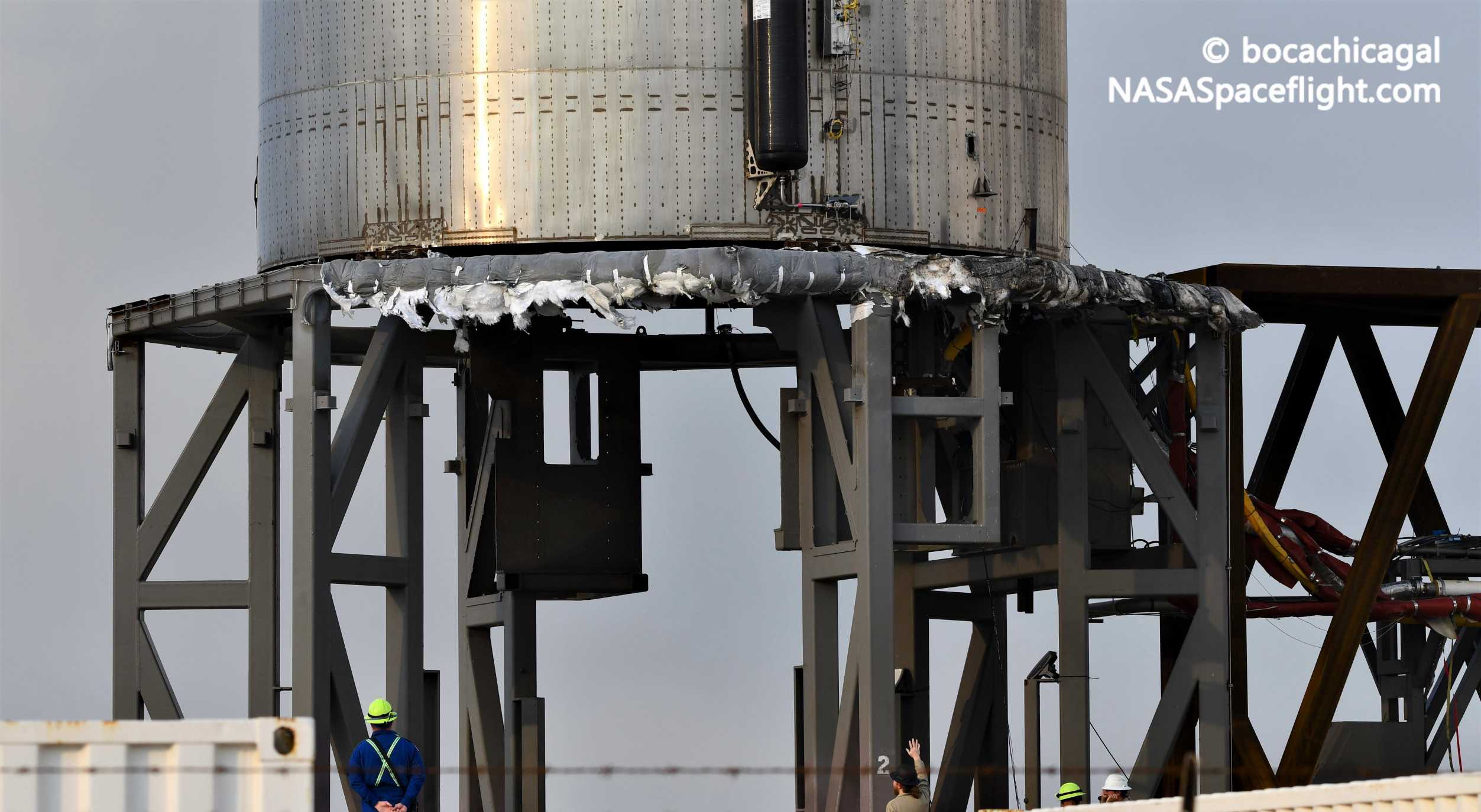
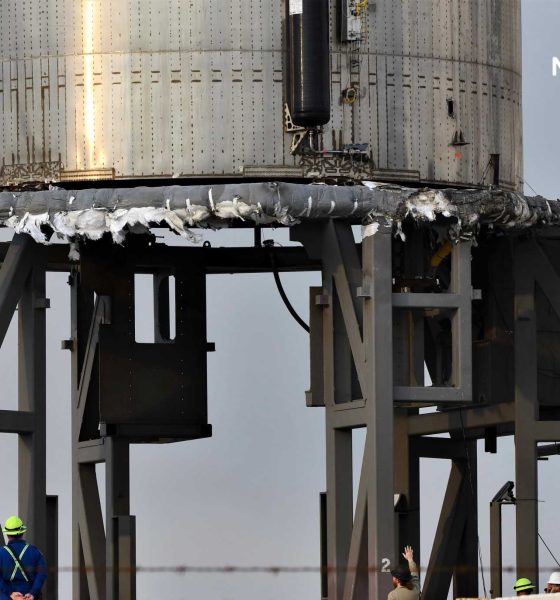
News
SpaceX Starship prototype charred but intact after catching fire [photos]
SpaceX teams have finally safed the fourth full-scale Starship prototype nearly two days after a Raptor engine test caught it on fire, an anomaly that left the massive rocket charred and damaged – but still intact.
While SN4’s survival is a welcome and unexpected outcome, the fire that broke out near the base of the rocket caused damage that will have to be repaired, while the fault that allowed that fire to occur in the first place will also need to be rectified. Had the same events transpired during the ship’s inaugural flight test, things could have gone even further south after the rocket lifted off, carrying it away from remotely-controlled water jets used to suppress unplanned fires on the pad.
Thankfully, SpaceX’s focus on testing, testing, and testing some more meant that Starship SN4’s minor self-immolation occurred on the ground when the stakes – while high – were much lower than they would have been with an airborne rocket. The problems uncovered will, of course, need to be fixed, inevitably delaying the ship’s first flight test, but odds are that SN4 now has a better shot at success thanks to those hiccups.
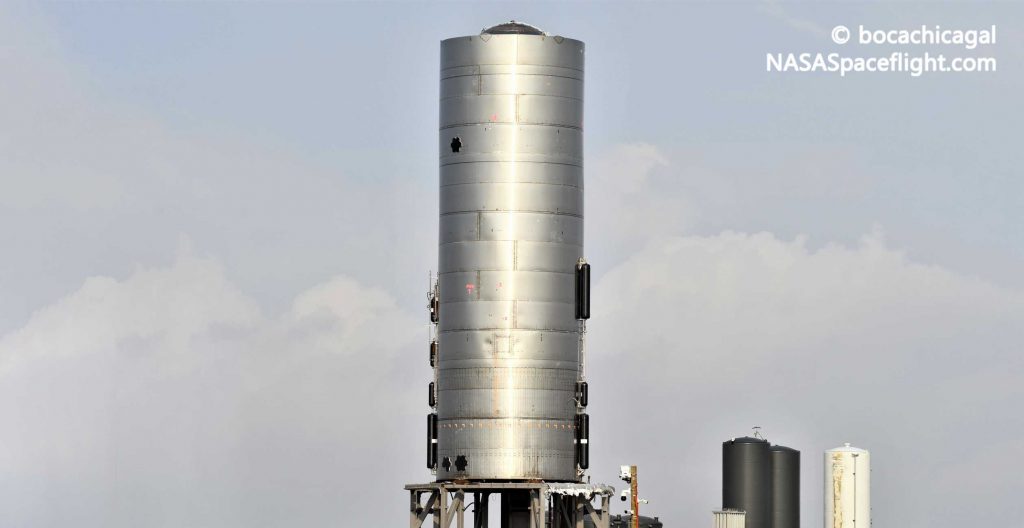
Thanks to the fact that Starships are constructed almost entirely out of steel, a little (or a lot of) fire shouldn’t theoretically be much of a problem. However, SpaceX has taken a rather freeform approach to its early Starship SNx prototypes, opting to bolt, weld, or tape on the vast majority of external hardware with little or no protection from the elements, including fires ignited by the ships themselves.
With SN4, it appears that the pressure jump experiences immediately after Raptor ignition (the ship’s third such test) shook some methane-related plumbing loose. Raptor continued to burn for another five or so seconds after that minor failure, shutting down as planned – but not before it ignited the methane the burst pipe was leaking. Additionally, after that new plume of boiling liquid methane caught fire, the fire it sustained proceeded to ignite insulation wrapped around the rocket’s launch. It burned vigorously, likely helping to damage wiring, ultimately causing SpaceX to partially lose control of the rocket and preventing attempts to inspect and fix the damage for two full days.
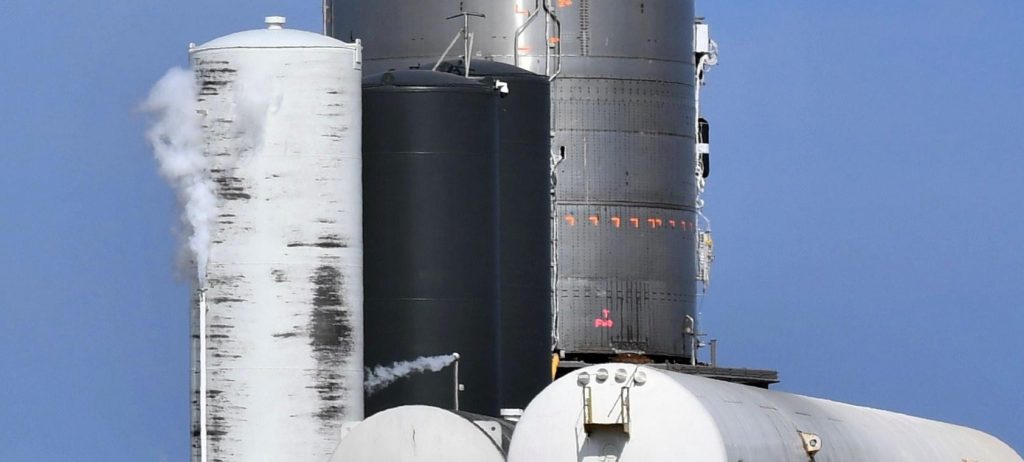
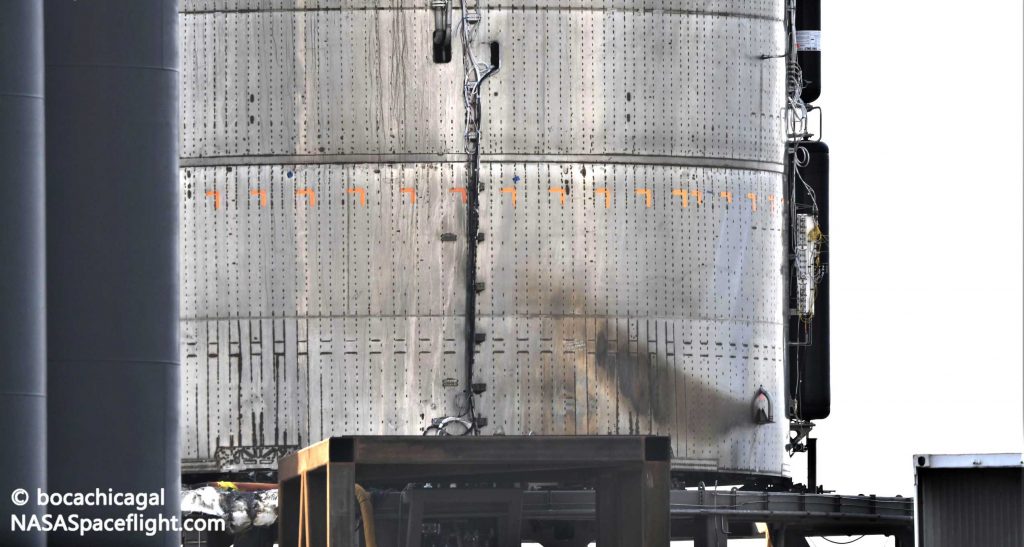
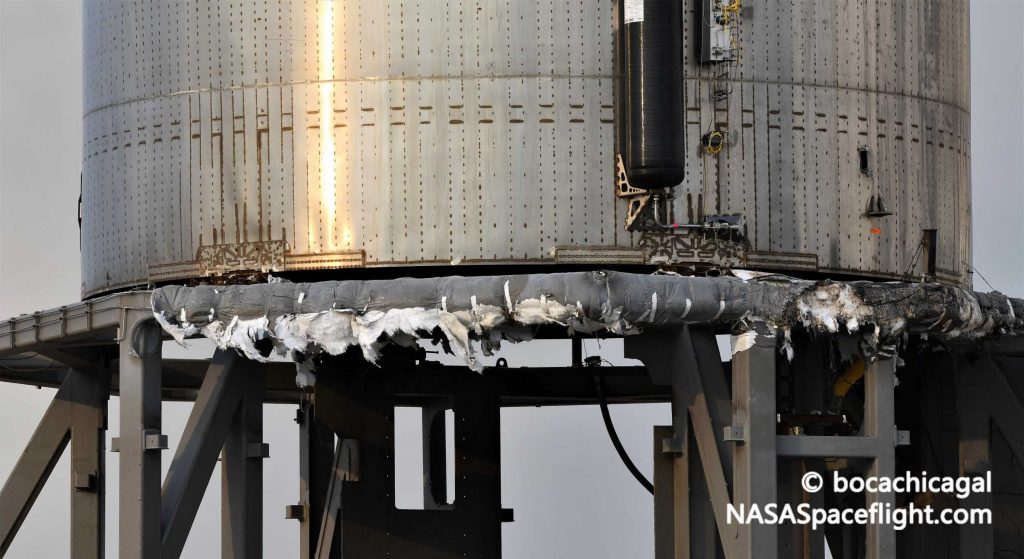
It’s safe to say that SpaceX is probably going to prioritize avoiding the series of events that caused May 19th’s anomaly from here on out, considering that things could have easily gone much worse. Thankfully, whatever control SpaceX or the rocket itself retained after wire damage allowed it to safely offload its flammable propellant and vent expanding gases to prevent SN4’s tanks from bursting. Installing highly flammable insulation approximately 10 feet away from an active Raptor engine and giant controlled fire and explosion was also inadvisable and probably won’t be repeated.
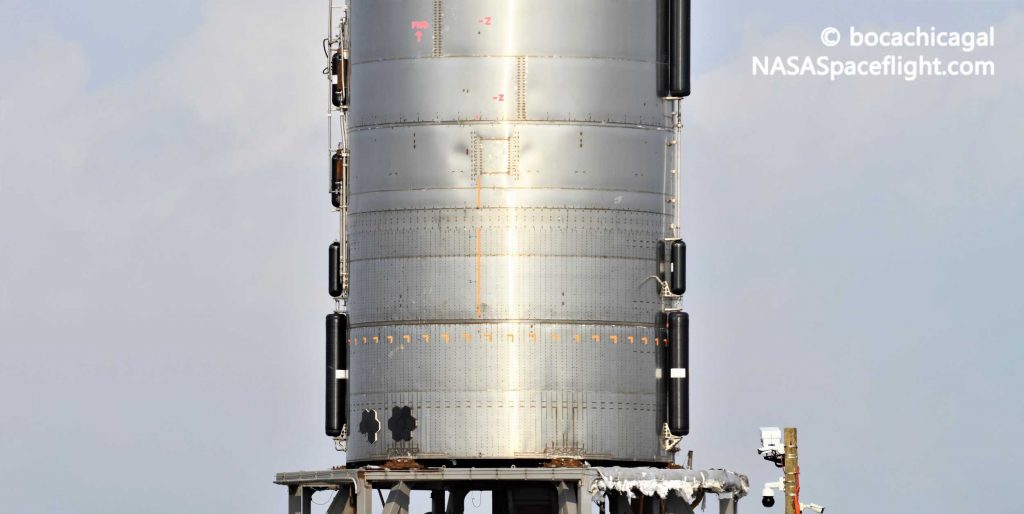
Thankfully, the damage is clearly minimal and Starship SN4 survived the ordeal otherwise unscathed. With any luck, inspections and repairs will be quick and easy and SpaceX – as NASASpaceflight reporter Michael Baylor notes – will be able to complete an identical static fire test without starting a fire on Starship SN4. SpaceX has requested a new road closure (signifying planned testing) on May 28th with backup windows on May 29th and June 1st.
Thanks to Starship SN4’s unplanned delays, it now looks quite likely that SpaceX’s next full-scale Starship prototype (SN5) will be completed – or nearly so – by the time that its predecessor is cleared for flight. “Too many Starships” is certainly a welcome problem to have.

News
Tesla Giga Berlin draws “red line” over IG Metall union’s 35-hour week demands
Factory manager André Thierig has drawn a “red line” against reducing Giga Berlin’s workweek to 35 hours, while highlighting that Tesla has actually increased its workers’ salaries more substantially than other carmakers in the country.

Tesla Giga Berlin has found itself in a new labor dispute in Germany, where union IG Metall is pushing for adoption of a collective agreement to boost wages and implement changes, such as a 35-hour workweek.
In a comment, Giga Berlin manager André Thierig drew a “red line” against reducing Giga Berlin’s workweek to 35 hours, while highlighting that Tesla has actually increased its workers’ salaries more substantially than other carmakers in the country.
Tesla factory manager’s “red line”
Tesla Germany is expected to hold a works council election in 2026, which André Thierig considers very important. As per the Giga Berlin plant manager, Giga Berlin’s plant expansion plans might be put on hold if the election favors the union. He also spoke against some of the changes that IG Metall is seeking to implement in the factory, like a 35-hour week, as noted in an rbb24 report.
“The discussion about a 35-hour week is a red line for me. We will not cross it,” Theirig said.
“(The election) will determine whether we can continue our successful path in the future in an independent, flexible, and unbureaucratic manner. Personally, I cannot imagine that the decision-makers in the USA will continue to push ahead with the factory expansion if the election results favor IG Metall.”
Giga Berlin’s wage increase
IG Metall district manager Jan Otto told the German news agency DPA that without a collective agreement, Tesla’s wages remain significantly below levels at other German car factories. He noted the company excuses this by referencing its lowest pay grade, but added: “The two lowest pay grades are not even used in car factories.”
In response, Tesla noted that it has raised the wages of Gigafactory Berlin’s workers more than their German competitors. Thierig noted that with a collective agreement, Giga Berlin’s workers would have seen a 2% wage increase this year. But thanks to Tesla not being unionized, Gigafactory Berlin workers were able to receive a 4% increase, as noted in a CarUp report.
“There was a wage increase of 2% this year in the current collective agreement. Because we are in a different economic situation than the industry as a whole, we were able to double the wages – by 4%. Since production started, this corresponds to a wage increase of more than 25% in less than four years,” Thierig stated.
News
Tesla is seeing a lot of momentum from young Koreans in their 20s-30s: report
From January to November, young buyers purchased over 21,000 Teslas, putting it far ahead of fellow imported rivals like BMW and Mercedes-Benz.

Tesla has captured the hearts of South Korea’s 20s-30s demographic, emerging as the group’s top-selling imported car brand in 2025. From January to November, young buyers purchased over 21,000 Teslas, putting it far ahead of fellow imported rivals like BMW and Mercedes-Benz.
Industry experts cited by The Economist attributed this “Tesla frenzy” to fandom culture, where buyers prioritize the brand over traditional car attributes, similar to snapping up the latest iPhone.
Model Y dominates among young buyers
Data from the Korea Imported Automobile Association showed that Tesla sold 21,757 vehicles to the 20s-30s demographic through November, compared to BMW’s 13,666 and Mercedes-Benz’s 6,983. The Model Y led the list overwhelmingly, with variants like the standard and Long Range models topping purchases for both young men and women.
Young men bought around 16,000 Teslas, mostly Model Y (over 15,000 units), followed by Model 3. Young women followed a similar pattern, favoring Model Y (3,888 units) and Model 3 (1,083 units). The Cybertruck saw minimal sales in this group.
The Model Y’s appeal lies in its family-friendly SUV design, 400-500 km range, quick acceleration, and spacious cargo, which is ideal for commuting and leisure. The Model 3, on the other hand, serves as an accessible entry point with lower pricing, which is valuable considering the country’s EV subsidies.
The Tesla boom
Experts described Tesla’s popularity as “fandom culture,” where young buyers embrace the brand despite criticisms from skeptics. Professor Lee Ho-geun called Tesla a “typical early adopter brand,” comparing purchases to iPhones.
Professor Kim Pil-soo noted that young people view Tesla more as a gadget than a car, and they are likely drawn by marketing, subsidies, and perceived value. They also tend to overlook news of numerous recalls, which are mostly over-the-air software updates, and controversies tied to the company.
Tesla’s position as Korea’s top import for 2025 seems secured. As noted by the publication, Tesla’s December sales figures have not been reported yet, but market analysts have suggested that Tesla has all but secured the top spot among the country’s imported cars this year.
News
Tesla FSD fleet is nearing 7 billion total miles, including 2.5 billion city miles
As can be seen on Tesla’s official FSD webpage, vehicles equipped with the system have now navigated over 6.99 billion miles.

Tesla’s Full Self-Driving (Supervised) fleet is closing in on almost 7 billion total miles driven, as per data posted by the company on its official FSD webpage.
These figures hint at the massive scale of data fueling Tesla’s rapid FSD improvements, which have been quite notable as of late.
FSD mileage milestones
As can be seen on Tesla’s official FSD webpage, vehicles equipped with the system have now navigated over 6.99 billion miles. Tesla owner and avid FSD tester Whole Mars Catalog also shared a screenshot indicating that from the nearly 7 billion miles traveled by the FSD fleet, more than 2.5 billion miles were driven inside cities.
City miles are particularly valuable for complex urban scenarios like unprotected turns, pedestrian interactions, and traffic lights. This is also the difference-maker for FSD, as only complex solutions, such as Waymo’s self-driving taxis, operate similarly on inner-city streets. And even then, incidents such as the San Francisco blackouts have proven challenging for sensor-rich vehicles like Waymos.
Tesla’s data edge
Tesla has a number of advantages in the autonomous vehicle sector, one of which is the size of its fleet and the number of vehicles training FSD on real-world roads. Tesla’s nearly 7 billion FSD miles then allow the company to roll out updates that make its vehicles behave like they are being driven by experienced drivers, even if they are operating on their own.
So notable are Tesla’s improvements to FSD that NVIDIA Director of Robotics Jim Fan, after experiencing FSD v14, noted that the system is the first AI that passes what he described as a “Physical Turing Test.”
“Despite knowing exactly how robot learning works, I still find it magical watching the steering wheel turn by itself. First it feels surreal, next it becomes routine. Then, like the smartphone, taking it away actively hurts. This is how humanity gets rewired and glued to god-like technologies,” Fan wrote in a post on X.








